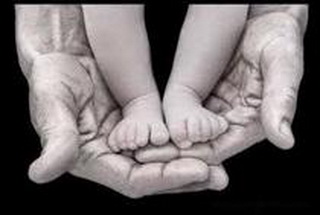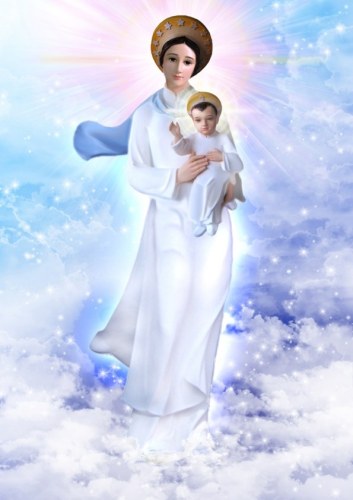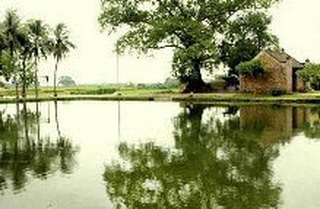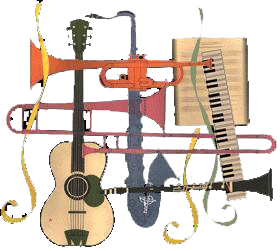I Went To Elementary School
(in the 1950’s)
“An ơi, trường học ví như người mẹ, người mẹ đã rứt con ở tay ta khi con nói chưa sõi để trả lại cho ta một đứa con khỏe mạnh, tử tế và siêng năng. Lạy Thượng đế giáng phúc cho ngườI mẹ khoan từ ấy!… Mai sau con nên người, con sẽ du lịch trong thế giời, con sẽ trông thấy những thị thành hoa lệ, những đài các nguy nga, nhưng con phải nhớ luôn luôn đến nếp nhà trắng tầm thường kia với cửa chớp khép, với vườn cây xanh, vì đấy là nơibông hoa trí tuệ đầu tiên của con đã nẩy nở”
Edmondo de Amicis.
(Tâm Hồn Cao Thượng, Hà Mai Anh dịch).
Education in the Newly Independent Vietnam
Before 1945, there was a colonial instructional system devised specifically for the purpose of the production of a basically literate or moderately educated, mid-level class of government workers to serve the colonial government. It was supposed to replace the traditional, Confucian system of education that used Old Chinese (sinitic) characters (Chữ Hán) as its official language. In this system, in place since the 11th century, there were successive, selective examinations at multiple levels to recruit the best candidates for public office (Thi Hương, Thi Hội, Thi Đình).
The Vietnamese modern education system was based on the French model since the turn of the 20th century. The Franco-indigenous education started in 1879 with the Southern part of Vietnam (Cochinchina) used as an educational laboratory. The first modern schools then spread to Central (Annam) and North Vietnam (Tonkin), notably with the creation of the College of Interpreters in Hanoi in 1886. These schools produced a generation of notable and influential Vietnamese intellectuals such as Truong Vinh Ky, Nguyen Van Vinh (founder of Dong Duong Tap Chi), Pham Quynh and Tran Trong Kim (author of landmark history book A Short Treatise of Vietnamese History). In 1908, there were 15,000 traditional schools in Annam and Tonkin, where Chinese characters were taught to about 200,000 pupils, not counting official schools in district and provincial seats. These schools were gradually replaced by the Franco-indigenous schools. In 1920, there were 1,126,000 primary school students. In 1924 the educational system was made of 3 years of Elementary Primary Cycle, then a Primary Cycle (2 years then increased to 3 years in 1927), extended by 2 highly selective examinations into upper primary and secondary “local” education. At the end of the process, the students sat at an exam for the “local” baccalaureat (French equivalent of a high school diploma). The first university was created by Governor-General Paul Beau in Hanoi in 1907 (“The Indochinese University”) (Pierre Brocheux and Daniel Hemery; Indochina, An Ambiguous Colonization; University of California Press, 2009)
Besides the colonial system, there was also a pathway identical to the one used in the “metropole” of the French colonial empire, that is, in France itself. It went from the classe de douzieme (“12th class”, or first grade in the American system) up to the classe terminale and was available only in few metropolitan areas. The only University was located in Hanoi until 1947, when a second Medical School (Faculty of Medicine) was created in Saigon, in the South of the country. A lot of well to do students went abroad to study at French universities.
After 1954, when Vietnam was divided into two states, one, communist (Democratic Republic of Vietnam) in the North and the other, anticommunist (Republic of Vietnam) in the South, a large part of the faculty of the Hanoi University fled the new totalitarian regime in the North and joined the University of Saigon.
Until the late fifties, instruction at university level was done in French in Saigon. For another decade, the University of Paris still sent its professors to the Saigon Medical School as part of France’s educational assistance program to Vietnam. That program was terminated under the government of Premier Nguyen Cao Ky. In Hanoi, after 1954, it was the communist regime’s decision to immediately switch instruction at every level to Vietnamese, despite the lack of Vietnamese scientific terminology and faculty proficient in expressing scientific thought totally in Vietnamese.
I started my education in the 1950’s, when South Vietnam just emerged as an independent state. After elementary school, which lasted 5 years and ended with a final exam, students were awarded the primary studies diploma. In the French school system (which still existed in parallel with the Vietnamese system in a few large cities, and to which I was transferred at the end of my elementary school), high school was either a college which had 6th to 11th grades, or lycée, which went as far as grade 12th, called also “ classe terminale” (equivalent to a very competitive American high school’s senior year).
My Elementary School
In that context, I grew up in Huế, in the northernmost part of South Vietnam. My elementary school was about a mile from home. I walked to school in the morning, came back home around noon for lunch and then walked to school again. It took about two hours of walking a day, quite a lot of regular exercise, six days a week. Thursdays and Saturdays, I had the afternoon off.
Thanh Long Elementary was formerly named after a French military colonist (Queignec). It was located next to the city slaughterhouse (“abattoir”), not an ideal location for a school. The new name, Thanh Long, meant Blue Dragon and was taken from the name of a small historic bridge nearby that I had to cross everyday on my way to school.
It had about 300 students. It had a main building consisting of about 5-6 classrooms. A smaller building parallel to the first one could better be described as a hangar, having a wall on only three of its four sides. We studied there half of the day, alternatively, in the morning or in the afternoon, because we lacked space in the main building. I do not remember if this interfered with our studying during rain or thunderstorms. Between the two structures, there was a small courtyard with a flagpole in the middle. In the back of the buildings, there was a large yard where children played during recesses.
A few things are still vivid in my memory. There was a recessed window of the building part of the slaughterhouse next door that opened on the yard; we liked to climb there and sit on the sill. Once, someone from the other side poured a pail of dirty hot water through the slatted window panel and it was all over me. I don’t think I got burned but it was quite an experience to remember. I also remember the outhouses, which were terribly dirty.
In 1954, after the defeat of the French at Dien Bien Phu, and following the Geneva Agreements (7/20/1954), which marked the end of French military involvement in Vietnam, more than a million people fled the Communist controlled Northern part of Vietnam to be resettled in the South. Many of them found temporary shelter at my elementary school. For many months, it became a crowded refugee camp. My second grade year was delayed for a whole trimester. When we came back to class, most of the beautiful “antigone’ flower plants that used to climb above the class entrances were destroyed and furniture was damaged. Next to our school, behind a concrete wall, Trại Vinh Sơn, a camp of Northern refugees named after Catholic Saint Vincent, still lingered for years afterwards. The new presence of refugees, mostly Catholic and speaking with a very different accent, brought a new level of diversity in the life of the conservative and secular former imperial city of Huế.
Political climate: Ngô Đình Diệm, the new strong man
The state of South Vietnam was being created by then, so the government made a lot of effort to inculcate in us a sense of patriotism, of allegiance to the new state and to the new leader Ngô Đình Diệm. At the beginning of the school day, we had to stay in formations, dressed in our Boy Scout-like uniform of marine blue slacks and white shirts, with a yellow and blue scarf tied around our neck. We then sang in unison our national anthem, followed by our eulogy of the Prime Minister (later President) Ngô Đình Diệm.
The anthem started with the sentences :
“Này thanh niên ơi, đứng lên đáp lời sông núi,
Đồng lòng cùng đi hy sinh tiếc gì thân sống,
Vì tương lai quốc dân, cùng xông pha khói tên,
Làm sao cho nước Nam từ nay luôn vững bền”
("Young people, let’s stand up and respond to the call of the land, let’s go and sacrifice our lives without hesitation. For the future of our people, let’s together defy arrows and gunpowder, so that our southern country stays even more solid from now on…")
It ended like this :
Thanh niên ơi, mau hiến thân dưới cờ,
Mau làm cho cõi bờ thoát cơn tàn phá, vẻ vang,
Ngàn năm xứng danh rằng ta là giống Lạc Hồng.
(”Young people, let’s immolate ourselves under the flag, let‘s bring glory to our borders so that for a thousand years we deserve our reputation as the descendants of the Fairy and the Dragon*”.)
*Vietnamese mythology says that we descended from the marriage of Lạc Long Quân and Âu Cơ. Lạc Long Quân was the son of Long Nữ, the Dragon Lady. Âu Cơ was from fairy ancestors. They had 100 children that later they divided among themselves. 50 followed their father to inhabit the mountains and 50 followed their mother to the sea, probably meaning the lowlands. Isn’t it tragic that our first family made in Heaven also ended up in divorce?
Then there was the hymn to our leader Ngô Đình Diệm :
Ai bao năm từng lê gót nơi quê người?
Cứu đất nước, thề tranh đấu cho tự do
Người cương quyết chống Cọng, bài phong kiến bóc lột, diệt thực dân đang rắt reo tàn phá...
Ngô Tổng Thống, Người về đây, đưa dân tộc lên vinh quang chiến thắng...
("Who had for years wandered in foreign lands, searching for a means to save our country and dedicating himself to the cause of freedom? He is committed to fighting communism, to banning feudalism, to struggling against colonialism… President Ngô, you come to bring our people to glory and victory…")
We didn’t understand most of the lyrics, in particular we knew nothing about the historical contexts of the big words like freedom, communism, feudalism and colonialism. We had to sing those songs every day while saluting our colors. We were told that the flag’s three horizontal red stripes represented the three parts of our unified country, and that the yellow background was the color of ripe rice field, of our national flower hoa mai or bông mai (apricot flower) that bloomed around Tet. (I later learned that, in fact, the yellow background represented Vietnamese royalty. The three stripes were chosen by Prime Minister and historian Trần Trọng Kim during the short lived Japanese sponsored government of 1945. They were derived from the Book of Change’s trigram or guai Li [quẻ Li ]. Li designates the South but also means separation).
To older generations who had lived through different regimes and political ideologies, from Confucian monarchy to French and Japanese colonialism, this might look like another ridiculous wave of political propaganda based on the cult of a strong man. We ourselves also might now see all this as mere hollow political indoctrination, particularly in the context of American style political life where administrations and individual leaders come and go as frequently as fashion fads. However, in retrospect, I see a possible positive side in all this. It was a different context then. A political state was born with so much uncertainty in its future and where so many lives were at stake. Pride in our heritage and confidence in our leader were not mere talk for the purpose of feeling good; it had an impact on our fight for survival in front of the multiple forces that tried to destroy our existence as a new nation.
The curriculum
We had Vietnamese, arithmetic, history, geography and khoa học thường thức (the basic sciences). Vietnamese stressed on calligraphy (tập viết) and orthography (chính tả). We spoke the Huế dialect with its characteristics like pronouncing the sound “nh” (as in piñata) as “y”( as in yak). For example we pronounced “nhà” (house) and “già” (old) the same way [ya]. We did not differentiate between the ending consonants t and c, so for example we pronounce “rát” (burning pain) and “rác”(trash) the same way. We had five tones for each sound instead of six as in Northern Vietnamese. For us, “nửa (half) and “nữa” (again) sounded the same. That’s why we had more difficulty with spelling than the northerners, standard spelling being mostly based on the northern dialect. We also had recitation where we had to memorize short poems or paragraphs by heart (học thuộc lòng). I still remember large parts of those poems, most of them popular folkloric songs (ca dao). During the summers, my older brothers and sisters gave me similar assignments. Familiar topics for essays were “Description of a rainy afternoon”, or at a higher level : “Explain the following saying: ‘As it flows, water erodes stones’ (Nước chảy đá mòn). What does it mean to you? Give examples illustrating the idea contained in the saying.” Writing letters to my brothers in Saigon was another activity that helped improve my Vietnamese.
Those few years of basic Vietnamese gave me a foundation on which I later built up my knowledge and my love of the language. Recently, I have regularly published articles in different Vietnamese newspapers and magazines. Most readers were surprised to learn that I had spent most my school years learning French. Actually, my years studying French helped me improve my ability to express myself in my mother tongue. Likewise, most Vietnamese writers in the era preceding the war against the French (1945-1954) had their background in the French system. Modern Vietnamese had to liberate itself from the constraints of formal and antiquated Sinitic -Vietnamese (Văn chương Hán Việt) and had to learn a lot from French in its attempt to express new western concepts in a manner accessible to a larger part of the population.
Lessons in mathematics and sciences consisted mostly of drills and rote learning. We had very primitive textbooks written in Vietnamese by local teachers. We did not have a laboratory and audio-visual materials were of course non-existent. Around 1955, our old principal, Thầy Phất, retired and the new principal was much younger and more active. He organized a campaign where each of the students would bring to school a few bricks and a little cement with which a new aisle was built. Then he tried to create our own học cụ khố (bank of teaching instruments). Each of us tried to create something to contribute to that makeshift museum: a map, a statue, a clay reproduction of a fruit or an animal, a simple device to illustrate a physics principle. Geography was concentrated on the study of our local province and data on Vietnam that we had to memorize. In retrospect, I think that many of my teachers were poorly informed or motivated and much of the information was outdated. However, I still remember the fun of making a map of Vietnam with grains of rice dyed in different colors and glued on a piece of cardboard. I also remember one of the rare field trips that we had: our class accompanied other older schoolmates to visit people living in different neighborhoods near our school. We walked all day long. We taught people elementary principles of hygiene. With a small supply of first aid medical material, we helped people take care of minor health problems like scabies or infected cuts of the skin. We washed their wounds and applied the ubiquitous, red antiseptic tincture mercurochrome (thuốc đỏ). I got a sense of belonging to my city and my country as well as the feeling that we were their owners responsible of their fate.
End of primary school
Summer 1957, I graduated from Thanh Long Elementary. I was almost ten years old, a year younger than the average student. When I was in third grade, my teacher wrote in my report card that I was “a very hard working but slow student.” She was always dressed up and laid back, and was famous for spending most of her time filing her nails and remaining seated on the podium at her desk. Two years later, under a much more understanding and attentive teacher, Cô Hương, I was doing much better and was described in my report card as a “very intelligent, very good student”. Perhaps, the change was due to Cô Hương, a dedicated, petite, typical “Huế” woman, who helped me overcome my shyness and believed in my ability to do well. At the graduation ceremony, I had an encouragement award (bằng tưởng lục) consisting of a dozen notebooks and a Vietnamese adaptation from the Italian classic novel “Great Hearts” (1). I was proud to get something to show to my parents. I also received the Diploma of Primary Studies (Bằng Tiểu Học). My brothers teasingly gave me the title of “Anh Khóa”. “Khóa” was the form of address reserved for those who had that diploma decades before, at the beginning of colonial rule, when even basic literacy in French or modern Vietnamese conferred some academic prestige. However, it was just a joke.
Of course, I had to go further in my studies. That, unfortunately, also meant that I had to leave my family very early in my life. At the College Francais de Tourane in Đà nẵng, it would be a completely western, secular education, without political, nationalistic, ethnic or religious consciousness. For many years, I was taken out of my Huế and Vietnamese identity; with each step I made in my education, the distance from home became greater and greater. After all these years, Thanh Long Elementary remains in me as my symbol of my roots, literally my nourishing mother, my alma mater.
Note: (1) “Great Hearts”: It was an educational fiction by Italian author Edmondo De Amicis (1846-1908), under the form of a diary by a second grade school boy who related the memorable events of his school year, things he learned from his teachers, his parents and his friends. There were letters that his parents wrote to him to make certain points about his behavior, when a written message was felt to have more impact than an oral one. For example, the father noticed that his child went to school reluctantly that morning. His letter then explained to his son the importance of education, reminded him that he was “a little soldier among the vast army of soldiers” around the world who are fighting ignorance, etc... He then exhorted him to more courage and hard work to his studies.
My father probably picked up from the book the habit of writing reminding letters to my brothers instead of talking to them face to face. “Great Hearts” was initially translated into French and became very popular in French schools under the title “Grands Coeurs”. In Vietnamese it was “Tâm Hồn Cao Thượng” by Hà Mai Anh. Vietnamese writer and Aeronautics Professor Nguyễn Xuân Vinh called its Vietnamese version “the book that had the greatest influence” on his generation.
The version that I received, “Dưới Mái Học Đường” (Under the School Roof) was a “Vietnamized” adaptation of “Tâm Hồn Cao Thượng” by Bùi văn Bảng.
BS Hồ Văn Hiền
(1999, edited 02-24-06, 10-31-2013)






